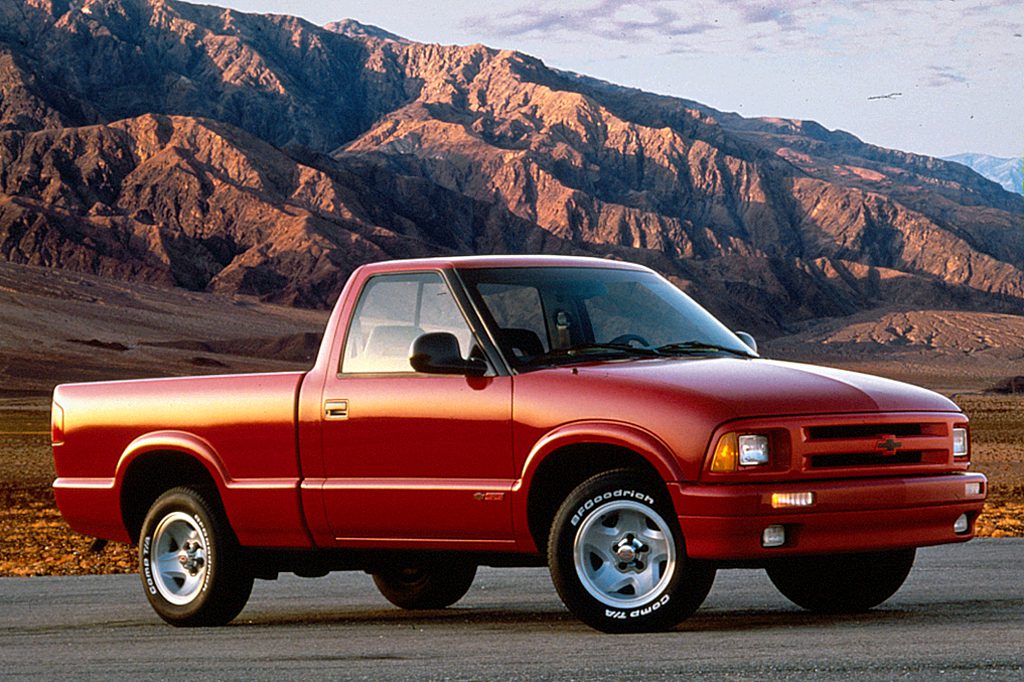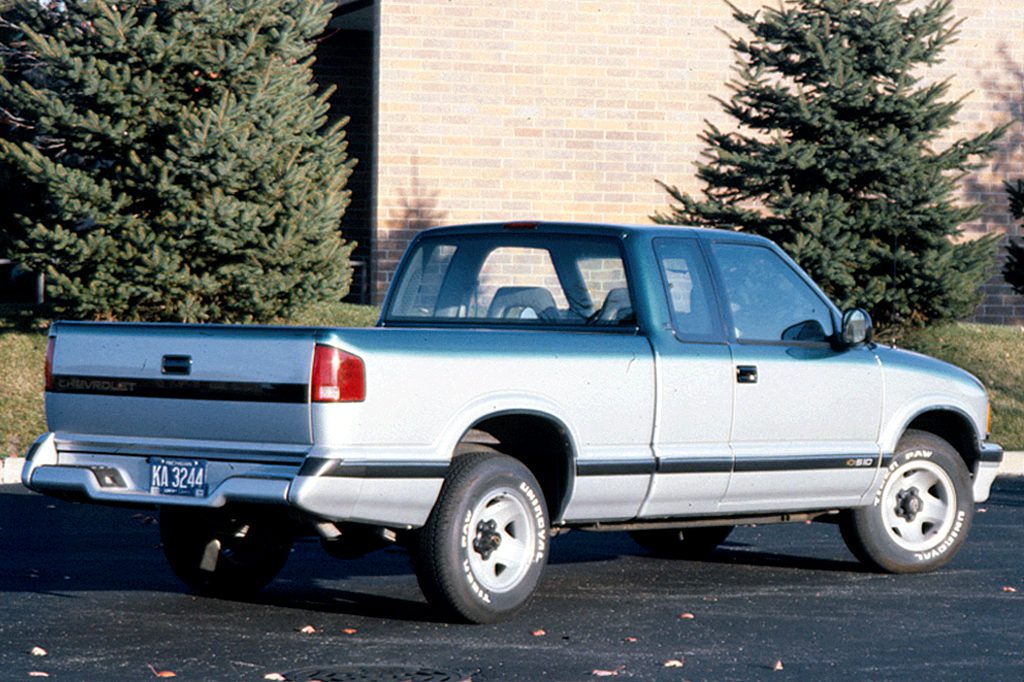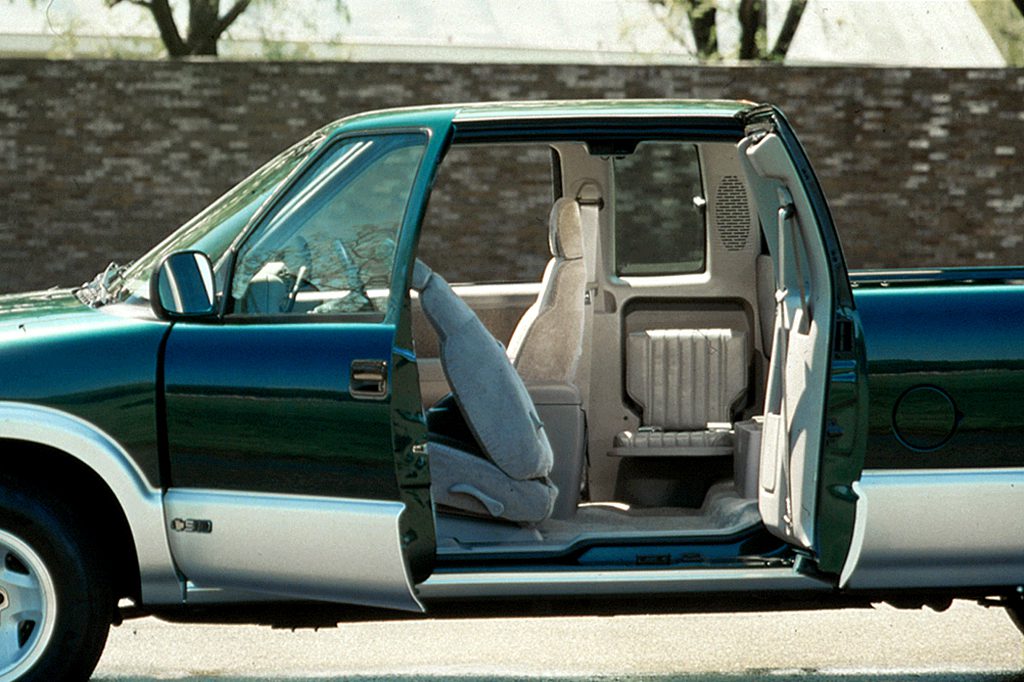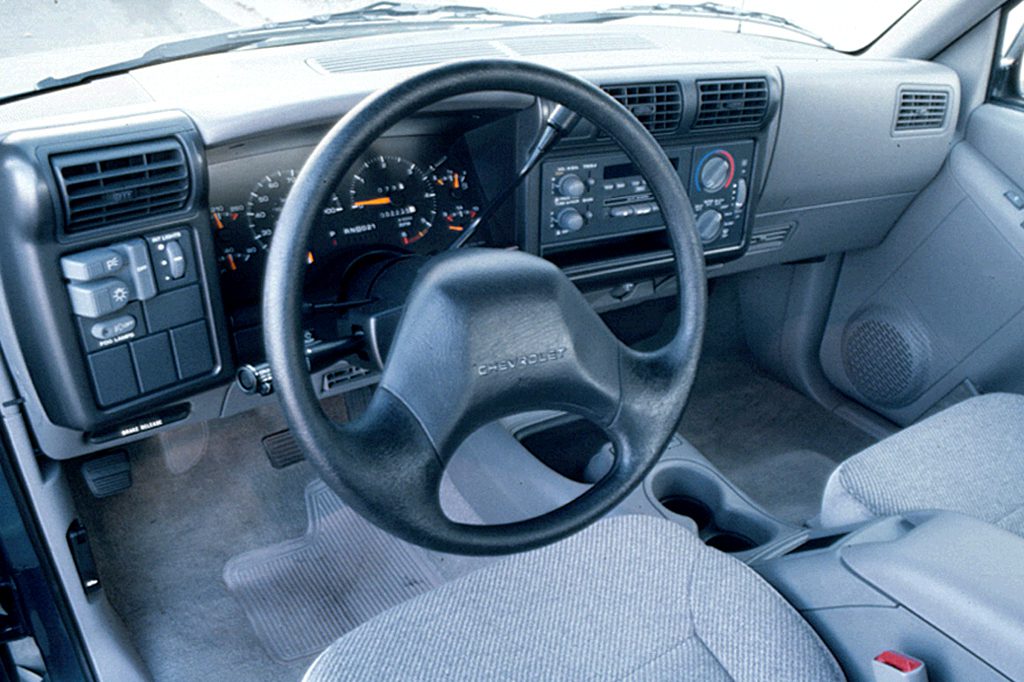| Compact pickup truck; Built in USA |
|
|
| Good condition price range: $1,500 – $8,000* |

1994 Chevrolet S10 SS regular cab

1994 Chevrolet S10 extended cab

1996 Chevrolet S Series ZR2 4WD extended cab

1996 Chevrolet S Series extended cab

1994 Chevrolet S10 interior
| Pros: |
|
| Cons: |
|
In their latest form, these compact pickups rank among the best in overall performance, ergonomics, and refinement. A Dodge Dakota has heftier hauling ability and an available V8 engine, but most buyers will be pleased with the Chevrolet. It outsells the Dakota and is a worthy contender to the sales-leading Ford Ranger.
Overview
Chevrolet redesigned its compact S10 pickups for 1994 on a modified version of the prior platform with longer bodies. Again sharing styling with GMC’s Sonoma, pickups had rear or 4-wheel drive, regular or extended cabs, and 4-cylinder or V6 engines. Side door-guard beams and a center high-mounted stoplamp were installed. Wheelbases were the same as before. Cargo beds measured 6 feet (short) or 7.5 feet (long). All three body styles gained about 10 inches in overall length. Rear antilock braking was standard on 4-cylinder models, but V6 trucks got 4-wheel ABS that worked in both rear-wheel drive and 4WD. Cabs gained three inches in shoulder room. The redesigned dashboard featured round analog gauges and soft-touch rotary climate controls, and a new console contained two cupholders. Base and upscale LS models went on sale. A Super Sport package included the “enhanced” 195-horsepower V6 engine, automatic, and a sport suspension. A ZR2 off-road package gave the 4WD regular cab a 4-inch-wider track, 3-inch higher stance, and an off-road suspension/tire setup.
Yearly Updates
| 1995 S-Series Pickup A driver-side airbag arrived for 1995, as Chevrolet replaced the previous S10 designation with S-Series nomenclature. Daytime running lights became standard during the model year. Backlighting was added to switches for power windows, locks, and mirrors. |
| 1996 S-Series Pickup A rear side door became optional on extended cabs during ’96, and a Sportside model with flared-fender cargo bed joined the Fleetside trucks. The optional door is on the driver’s side and cannot be opened unless the front door is opened. All S-Series models, including 4-cylinder trucks, now had 4-wheel antilock braking, operating in both 2WD and 4WD. Both V6 engines were revised, joining GM’s Vortec family. |
| 1997 S-Series Pickup An optional floor shifter for the automatic transmission was the main change for 1997. |
| 1998 S-Series Pickup Chevy reverted back to S-10 nomenclature and gave its compact pickup new exterior and interior styling. The new interior added a passenger-side airbag with an on/off switch. The base engine is also revised to lower noise levels (and it gains two horsepower). |
| 1999 S-Series Pickup Chevy traded the sporty SS package for the even-sportier Xtreme. Available only on 2WD models, it featured a lowered suspension, body-color aero trim pieces, and 16-inch alloy wheels. |
| 2000 S-Series Pickup Extended-cab versions got a new base-trim model, and 4x4s gained standard bucket seats. |
| 2001 S-10 S-10 added a 4-door crew cab and dropped the 4-wheel-drive regular cab model for 2001. The new crew cab came only in 4WD with a 4.6-foot bed. Regular cab 2001 models were only available in 2WD with a 6- or 7.3-foot cargo bed. |
| 2002 S-10 Air conditioning and a tachometer were newly standard, and the long cargo bed, which had been dropped at the beginning of the model year, was reinstated. A 6-disc in-dash CD changer was a new option, and Crew Cabs were now available with heated front seats. |
| 2003 S-10 Little change was evident for ’03 as replacement Colorado waited in the wings. |
| 2004 S-10 The S-10 continues only as a 4WD 4-dr Crew Cab for ’04. |
